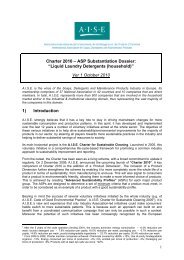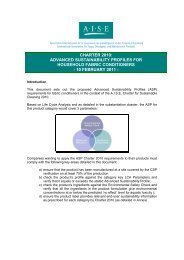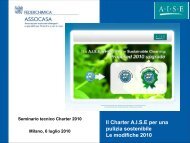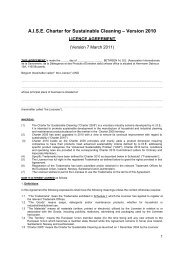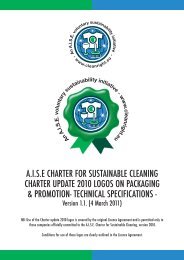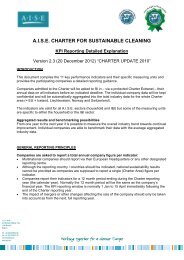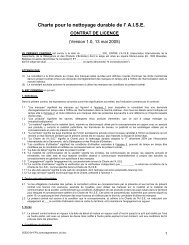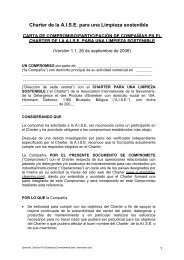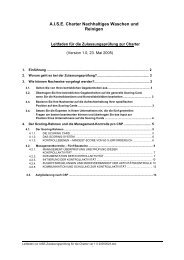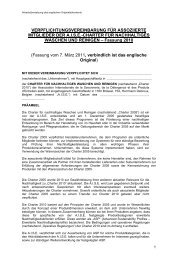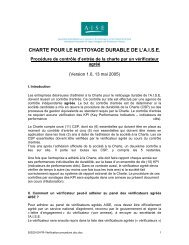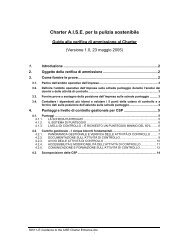2. Substantiation dossier - Sustainable Cleaning
2. Substantiation dossier - Sustainable Cleaning
2. Substantiation dossier - Sustainable Cleaning
Create successful ePaper yourself
Turn your PDF publications into a flip-book with our unique Google optimized e-Paper software.
5) ASP criteria and rationale<br />
A generic Life Cycle Analysis (LCA) on solid laundry detergents was carried out before the Charter<br />
ASP targets were set, to get an understanding of the environmental impacts of the various stages of a<br />
detergent’s life cycle.<br />
NB: Work on an updated screening LCA has been initiated; this is currently been carried out<br />
by the consultancy PRé and will be included here as soon as it is available. However, taking<br />
into account existing company LCAs for this product category, LCA experts from the A.I.S.E.<br />
network expect that the overall outcome will not differ much from that of the LCA to which it is<br />
referred below and which had been used for the development of the 1 st ASP version.<br />
The stages of the process considered were:<br />
- ingredients extraction / production<br />
- powder production<br />
- packaging<br />
- distribution<br />
- use<br />
- disposal<br />
and the parameters evaluated were:<br />
- energy consumption<br />
- water emissions<br />
- solid waste produced.<br />
The analysis confirms that the three most important factors in Life Cycle Analysis for solid laundry<br />
detergents are as follows:<br />
1. The most significant impact on the environment is in the use and disposal phases of the<br />
product’s life, due to the significant amounts of energy and water consumed by the washing<br />
machine. Therefore any LCA based criteria must take usage into account.<br />
<strong>2.</strong> The second most important factor to reduce environmental impact is through the reduction in<br />
resources used to manufacture the product. By concentrating or compacting solid laundry<br />
detergents, chemical use is reduced and this delivers significant savings in energy (hence<br />
CO 2 ) and waste, as well as delivering substantial savings in freight as more product can be<br />
carried on one truck.<br />
3. Given that laundry detergents end up as water-borne waste, it is essential that a sustainable<br />
product poses no risk for the environment. Therefore, all “down-the-drain” product categories<br />
must pass the Environmental Safety Check (ESC).<br />
Using the above life-cycle analysis as a starting point, the A.I.S.E. Task Force in charge of setting the<br />
ASP criteria for solid laundry detergents confirmed the relevance of the following main components,<br />
which had been considered when the 1 st version of ASP for solid laundry detergents was developed:<br />
- activities at product level, under the direct control of manufacturers:<br />
- by determining a maximum dosage of ingredients per standard wash<br />
- by determining a maximum dosage of packaging materials per standard wash<br />
- by setting a minimum level of recycled content in primary and secondary packaging.<br />
- by allowing low temperature wash (≤ 30°C)<br />
- activities at consumer level given that this represents the highest environmental impact:<br />
4



